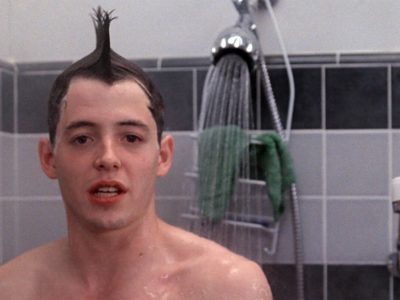What do the tooth fairy and a woman engineer have in common? They don’t exist. A clear disparity exists in numbers between men and women in STEM majors. If you look into any 2000 level science, technology, engineering or math course, you’ll probably notice something missing—women.
“In my engineering class discussion, I am the only female in the room,” University of Maryland engineering freshman Julihttp://www.nsf.gov/statistics/doctorates/pdf/sed1994.pdfa Roh said. “The other day I told a guy I was an electrical engineering major and he asked me what major I’m going to pick after I give up on engineering.” Roh shares this experience with the 163 females currently enrolled in the James Clark School of Engineering at UMD.
Historically, men have always outnumbered women in STEM majors. A study conducted by the National Science Foundation in 1990 found that while women earned the majority of bachelor’s degrees, they earned exceedingly fewer degrees in STEM programs, especially engineering, in which they only earned 15% of the total bachelor’s degrees.
“When I was growing up, I’d never seen a female dentist and rarely a female physician. I had really good female instructors that helped me as I chose to pursue dental hygiene,” hygienist and Howard University alumna India Parris said. The research by the National Science Foundation also shows that the gender gap has existed since STEM fields standardized. So what caused women to take less interest in these fields?
Most research points to environmental factors that condition women from a young age to dislike STEM education. Many believe that the negative stereotypes associated with nerds or a geeks deter adolescent girls from showing interest in STEM fields.
Tracey Welson Rossman founded TechGirlz, a non-profit dedicated to informing adolescent teens about careers in technology. In an interview with Forbes Magazine, Rossman said, “The facts are clear: girls think computer careers are boring, the media portrays techies as nerds and geeks, schools offer few programming or tech classes… [Technology] as a career is not being presented to girls in a way that is attractive to them.” Is that the case?
“I chose Aerospace Engineering because I thought it was interesting and challenging,”UMD Aerospace Engineering Professor and recipient of Space Educator of the Year Mary Bowden said. “I absolutely noticed the gap when I started in the field in 1978. It didn’t discourage me, I just felt special.”
The University of Maryland’s engineering department began the Women’s Community of the Clark School of Engineering, a sub-program created to encourage female participation in the engineering field. Since the start of the program, Bowden noted that although the number of women in the aerospace engineering program fluctuates in small increments, the number of female faculty and grad students has increased overall.
Along with UMD’s program, a plethora of initiatives across the nation aim to close the gender gap in STEM fields, including the Association for Women Mathematicians, Women in Technology, the Society of Women Engineers and the Association for Women in Science. Each group’s mission is to stimulate young girls’ interest in science, math, engineering and technology. Are these programs effective? The American Association of University Women found that programs that include a gender-balanced faculty retain and recruit more women.
In an interview with the Society of Women Engineers, Applied Mathematics Researcher at Colombia University Alva Matthews said, “Once you educate everybody to think about engineering as a profession for women, you begin to interest women in the math and science fields. Women have really reached out to achieve, other than just the things they could achieve before.” As Parris mentioned, the gender gap in STEM majors was extremely noticeable in the 1970s, but now it’s slowly filling with eager STEM femmes.
Granted, it might be discouraging for young women to look around and feel like a minority, but women in STEM programs offer solidarity to one another. “You will never regret having worked too hard. Have confidence in yourself and force your inner voice to always remain positive,” Bowden said.
If you’re a woman thinking of pursuing a STEM major, go for it. Don’t let societal expectations affect your performance and pursue your interests. Fill the gap.

















